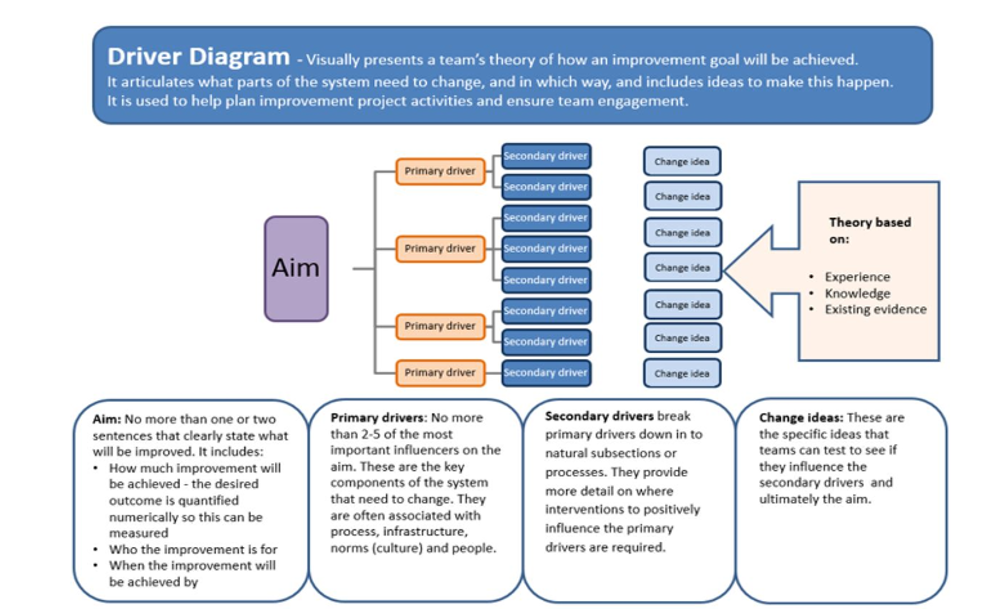Quality Improvement: Driver Diagram
About driver diagrams
Driver diagrams can be used to identify change ideas to help achieve an improvement aim. It visually presents the theory of change and how an improvement goal will be achieved.

Supporting protocol – how you might use this tool:
When adapting and implementing a local mental health and substance use protocol, this tool can assist with:
- Developing your improvement aim (or the aim statement), that quantifies what better will look like, for who and by when.
- Identifying primary drivers: these are key components of the system that need to change to achieve the primary aim.
- Identifying secondary drivers: these break the primary drivers down into subsections or processes, provide more detail on where interventions to influence primary drivers are required.
- Identifying change ideas: these specific ideas that teams can test to see if they influence the secondary and ultimately the aim.
The QI Zone provides tips and guidance on how to produce your own driver diagram for your improvement project. This exercise works best as a group activity that brings together subject matter experts (senior leads and staff from mental health and substance use services, wider stakeholders and lived experience).
Planning your workshops
You may need several sessions to complete your driver diagram. Outputs from previous exercises (such as ISM or process mapping) can be used to assist in developing the different components of the driver diagram. These sessions could be done virtually or in person. These sessions work best as a collaborative group exercise. Completing a driver diagram can be an opportunity to bring in wider stakeholders in your improvement work. The resources section has further tools and guidance to support your planning.
What you need to do before
- Identify the experts in the area where you want to focus your improvements. This can be clinical and operational staff, people with lived experience and third sector partners.
- Share session agenda and purpose of the session.
What you will need for the session
- These sessions will work best being facilitated, with someone to guide and steer the conversations towards what is needed to change in the system.
- If a remote session is planned, a platform to allow sharing of ideas such as Miro.
- If an in-person session is planned, appropriate resources so that ideas can be shared, collected and themed, i.e. post it notes, flip charts or wall charts.
Who should be involved
- Staff from across the whole system.
- People with lived experience and third sector partners.
- Depending on group size, smaller breakout (remote) or discussion groups to ensure that a range of voices and experiences can contribute.
What to do after the session
- Share outputs and ensure there is agreement.
- Expand on the driver diagram and develop change ideas for meeting your improvement aims.
